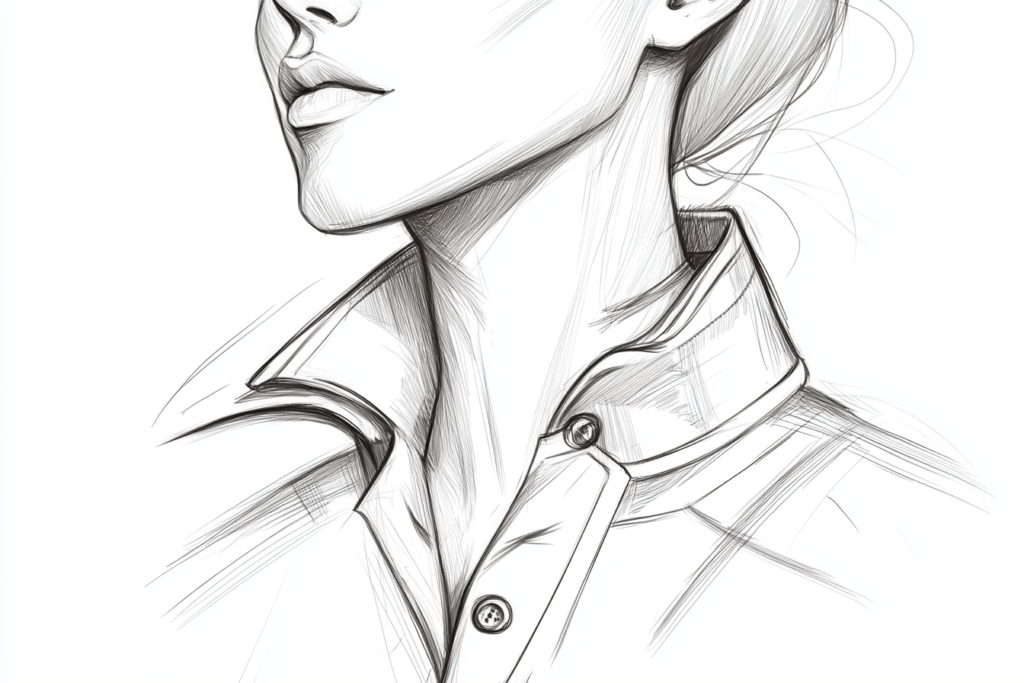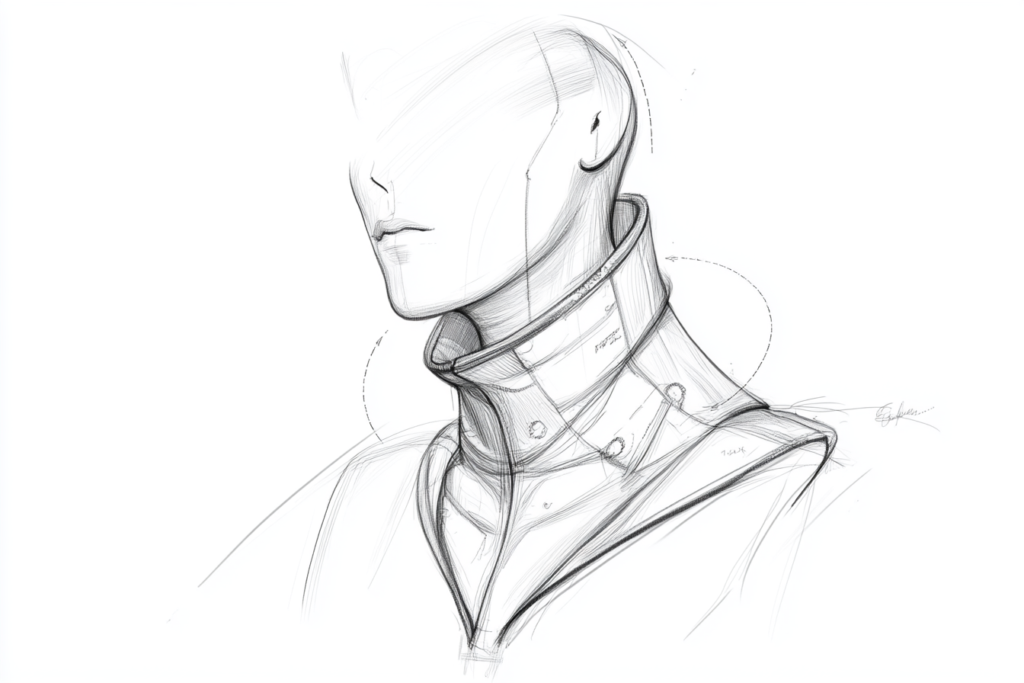Gorge: The Seam Where the Collar Meets the Lapel
Meta Description: Gorge refers to the line where a garment’s collar meets the lapel. Learn how this design detail affects the overall look of jackets and suits.
What is a Gorge in Garment Construction?
In fashion and tailoring, the gorge is the seam where the collar meets the lapel on jackets, blazers, and coats. This design element plays a crucial role in shaping the neckline and overall proportions of the garment. The placement of the gorge influences the style, formality, and visual balance of a tailored piece.
Gorge height, shape, and positioning can vary based on fashion trends, tailoring techniques, and body proportions. Designers and tailors adjust the gorge to create classic, modern, or bold silhouettes in suits, coats, and blazers.


Why is the Gorge Important?
The gorge line affects both the aesthetic and functionality of a garment:
1. Defines the Suit or Jacket’s Style
- A high gorge (closer to the shoulder) gives a more contemporary, sleek look.
- A lower gorge (closer to the chest) creates a traditional, vintage-inspired silhouette.
2. Affects the Visual Balance of the Garment
- Higher gorges can elongate the torso, making the wearer appear taller.
- Lower gorges create a broader, more relaxed appearance.
3. Reflects Fashion Trends
- 1950s–1970s: Lower gorges were popular in classic tailoring and wider lapels.
- 1980s–2000s: Higher gorges became common in modern, structured suits.
- Today: Medium-to-high gorges dominate contemporary menswear and fashion-forward designs.
4. Impacts the Lapel’s Shape and Angle
- The angle of the gorge determines whether a notch lapel, peak lapel, or shawl collar is used.
- A higher gorge with a sharp angle creates a dynamic, bold look.
Gorge Height in Suit Jackets and Blazers
| Gorge Placement | Effect on the Garment |
|---|---|
| High Gorge (Near the Shoulder) | Creates a modern, sharp silhouette; elongates the torso |
| Medium Gorge (Around the Upper Chest) | Balanced, timeless style suitable for most body types |
| Low Gorge (Near the Mid-Chest) | Vintage look, wider lapels, gives a relaxed or traditional feel |
The choice of gorge height depends on personal preference, body shape, and current fashion trends.
How Gorge Placement Affects Lapel Styles
The gorge is directly linked to lapel shape and design:
- Notch Lapel – The most common style, seen in business suits and blazers. The gorge forms a “V” notch where the collar meets the lapel.
- Peak Lapel – A dramatic, structured design where the gorge angle is sharp, often seen in formal suits and double-breasted jackets.
- Shawl Collar – A smooth, curved lapel with no visible gorge, often found on tuxedos and evening jackets.
Each lapel style influences the formality, style, and silhouette of the garment.
Gorge Trends in Modern Fashion
- Classic suits (e.g., Savile Row tailoring) tend to favor a medium gorge for a balanced, timeless look.
- Fashion-forward brands (e.g., Tom Ford, Balenciaga, Gucci) often use higher gorges for a contemporary, structured aesthetic.
- Retro-inspired suits from the 1970s and 1980s feature low gorges, wide lapels, and relaxed cuts.
Today’s tailored blazers and coats tend to feature higher gorges for a sleek, sophisticated silhouette.
Conclusion: The Impact of Gorge in Garment Design
The gorge line is a small but critical design element in tailoring that affects the fit, proportion, and style of jackets and coats. Whether you prefer a classic, modern, or bold look, understanding gorge placement helps in selecting suits, blazers, and coats that best suit your body shape and personal style.
As fashion trends evolve, the gorge position continues to shape tailored garments, making it an essential detail for both designers and consumers.



